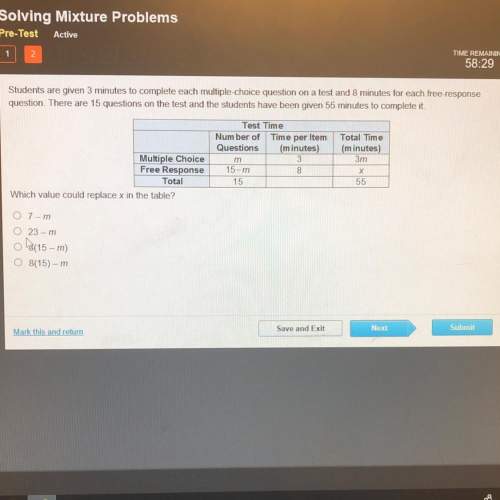
Mathematics, 05.05.2020 00:01 giulianna41
Use the tables to determine which function will eventually exceed the other, and provide your reasoning.
x f(x)
−1 0.5
0 1
1 2
2 4
x g(x)
−1 −7
0 −2
1 5
2 14
f(x) will eventually exceed g(x) because f(x) is an exponential function.
f(x) will eventually exceed g(x) because f(x) has a higher rate of change.
g(x) will eventually exceed f(x) because g(x) is an exponential function.
g(x) will eventually exceed f(x) because g(x) has a higher rate of change.

Answers: 1


Other questions on the subject: Mathematics


Mathematics, 22.06.2019 01:00, dyllanmasters99
Determine the intercepts of the line that passes through the following points. (15,-3)(15,−3) (20,-5)(20,−5) (25,-7)(25,−7)
Answers: 1


Mathematics, 22.06.2019 02:30, ayoismeisalex
F(x) = x^2+x-2/x^2-3x-4 what is the domain and range, x-and y-intercepts, horizontal asymptotes, and vertical asymptotes?
Answers: 3
You know the right answer?
Use the tables to determine which function will eventually exceed the other, and provide your reason...
Questions in other subjects:



English, 22.04.2020 21:31











